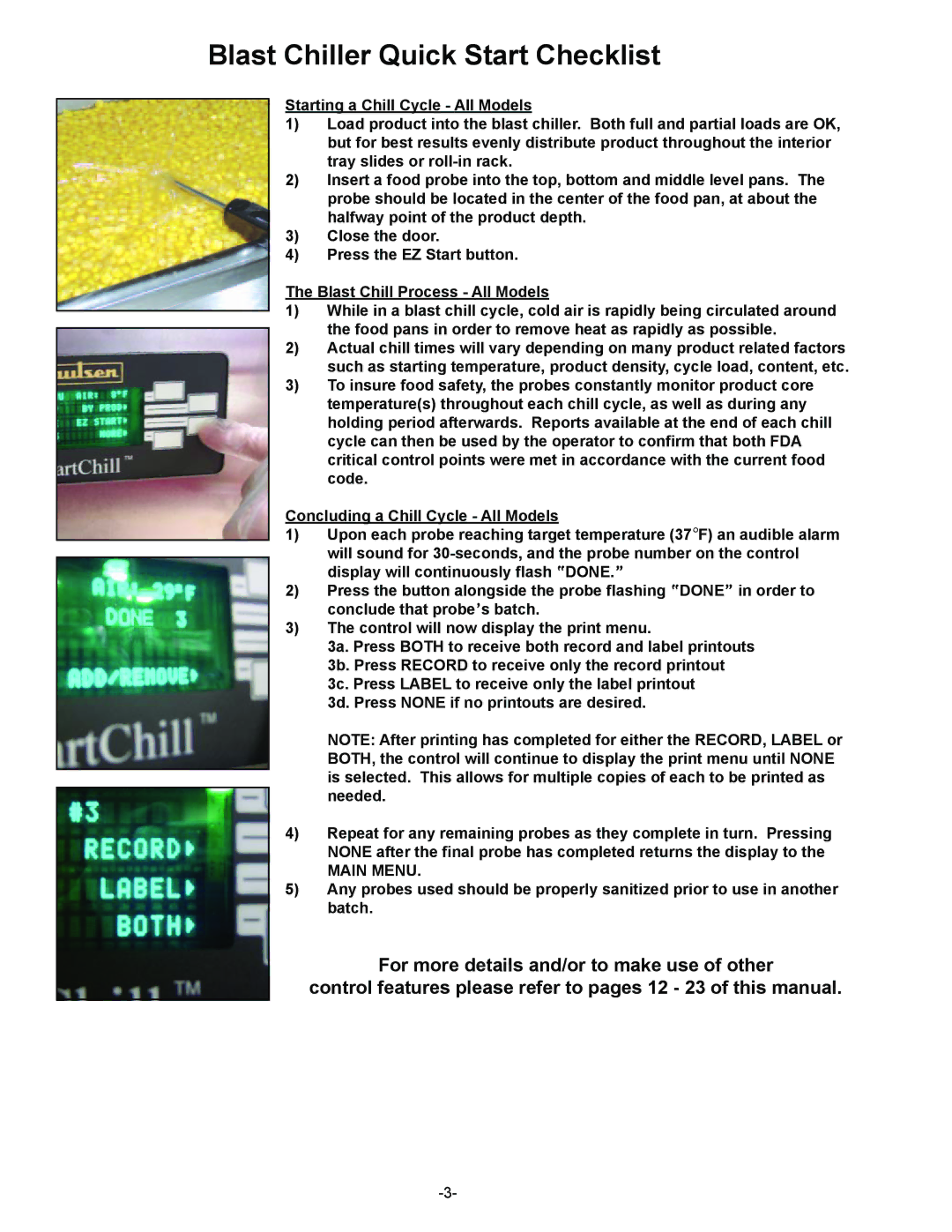
Blast Chiller Quick Start Checklist
Starting a Chill Cycle - All Models
1)Load product into the blast chiller. Both full and partial loads are OK, but for best results evenly distribute product throughout the interior tray slides or
2)Insert a food probe into the top, bottom and middle level pans. The probe should be located in the center of the food pan, at about the halfway point of the product depth.
3)Close the door.
4)Press the EZ Start button.
The Blast Chill Process - All Models
1)While in a blast chill cycle, cold air is rapidly being circulated around the food pans in order to remove heat as rapidly as possible.
2)Actual chill times will vary depending on many product related factors such as starting temperature, product density, cycle load, content, etc.
3)To insure food safety, the probes constantly monitor product core temperature(s) throughout each chill cycle, as well as during any holding period afterwards. Reports available at the end of each chill cycle can then be used by the operator to confirm that both FDA critical control points were met in accordance with the current food code.
Concluding a Chill Cycle - All Models
1)Upon each probe reaching target temperature (37°F) an audible alarm will sound for
2)Press the button alongside the probe flashing “DONE” in order to conclude that probe’s batch.
3)The control will now display the print menu.
3a. Press BOTH to receive both record and label printouts 3b. Press RECORD to receive only the record printout 3c. Press LABEL to receive only the label printout
3d. Press NONE if no printouts are desired.
NOTE: After printing has completed for either the RECORD, LABEL or BOTH, the control will continue to display the print menu until NONE is selected. This allows for multiple copies of each to be printed as needed.
4)Repeat for any remaining probes as they complete in turn. Pressing NONE after the final probe has completed returns the display to the
MAIN MENU.
5)Any probes used should be properly sanitized prior to use in another batch.
For more details and/or to make use of other
control features please refer to pages 12 - 23 of this manual.
